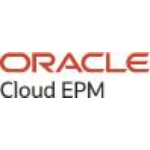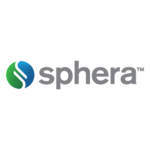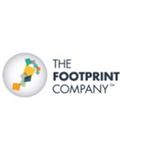TechnologyCounter provides genuine, unbiased real user reviews to help buyers make informed decisions. We may earn a referral fee when you purchase through our links, at no extra cost to you.
List of 15 Best Sustainability Management Software
Showing 1 - 15 of 16 productsOracle Fusion EPM the leading enterprise performance management solution designed to streamline and optimize business processes. This innovative software empowers organizations to drive strategic decision-making, improve financial planning and report...Read Oracle Fusion EPM Reviews
Enablon is a leading software company that provides innovative solutions for sustainability, EHS, and risk management. For over 20 years, Enablon has been dedicated to helping organizations achieve their sustainability goals and maintain a safe worki...Read Enablon Reviews
Cority EHS is a top-rated software that has revolutionized the way companies manage their environmental, health, and safety processes. With its advanced technology and user-friendly interface, Cority EHS has become the leading choice for organization...Read Cority EHS Reviews
EHS Insight is the powerful workplace management solution designed to revolutionize the way organizations handle environmental, health, and safety initiatives. With user-friendly features and unmatched functionality, EHS Insight empowers businesses t...Read EHS Insight Reviews
Quentic is the leading software for sustainability, health and safety, and environmental management. With its user-friendly platform, Quentic helps businesses streamline their processes, track compliance, and promote sustainable practices. With a ran...Read Quentic Reviews
Diligent ESG is a latest software revolutionizing environmental, social, and governance practices for businesses. With features tailored to meet sustainable goals and compliance requirements, Diligent ESG ensures organizations make informed decisions...Read Diligent ESG Reviews
Ecometrica is a leading software provider that specializes in helping businesses and organizations manage their environmental impact. With powerful tools analytics, Ecometrica enables users to accurately measure, monitor, and report on their sustaina...Read Ecometrica Reviews
Sphera EHS is a industry-leading environmental, health, and safety management software. With a user-friendly interface features, Sphera EHS streamlines compliance, mitigates risks, and drives sustainability for companies of all sizes. Experience a ne...Read Sphera EHS Reviews
Ecochain is a software designed to help businesses effectively manage their environmental impact and sustainably optimize their operations. With its innovative features interface, Ecochain is the perfect tool for companies looking to reduce their car...Read Ecochain Reviews
Pexapark the leading software solution for renewable energy sales and pricing optimization. With Pexapark, renewable energy producers can effectively manage and monetize their assets while staying ahead of market trends and regulations. Used by top i...Read Pexapark Reviews
Greenstone Enterprise, the innovative software solution designed to revolutionize the way businesses manage their operations. With its user-friendly interface features, Greenstone Enterprise streamlines processes, increases efficiency, and drives gro...Read Greenstone Enterprise Reviews
Figbytes the dynamic software revolutionizing data management. With its user-friendly interface features, Figbytes streamlines data organization and analysis for businesses of all sizes. Say goodbye to complex systems and hello to a more efficient wa...Read Figbytes Reviews
Footprint Calculator is a tool designed to measure your carbon footprint and help reduce your impact on the environment. With easy-to-use features and precise calculations, our software provides personalized insights to make more sustainable choices...Read Footprint Calculator Reviews
Worldfavor is a online platform that is transforming the way businesses manage and report sustainability data. Designed to streamline sustainable practices and promote transparency, Worldfavor provides a user-friendly interface for companies of all s...Read Worldfavor Reviews
Optera is a software designed to enhance your business operations. With advanced features and user-friendly interface, Optera streamlines tasks and maximizes efficiency. Simplify complex tasks and elevate your business to new heights with Optera. Say...Read Optera Reviews
- What Is Sustainability Software?
- Top Reasons Why Businesses Need Sustainability Software?
- What Are the Top Key Features of Sustainability Software?
- What Are the Top Benefits of Sustainability Software?
- What Are the Steps to Choose the Right Sustainability Software?
- What Are the Types of Sustainability Software for Different Industries?
- What Are the Technology Trends for Best Sustainability Software?
- What Are the Deployment Options for Sustainability Software?
What Is Sustainability Software?
Sustainability software refers to a category of technological applications designed to assist organizations and corporations in quantifying their sustainability endeavors, hence facilitating enhancements in their overall operational effectiveness.
Sustainability management software program facilitates the evaluation of corporate operations, monitoring of resources, comparison of performance against industry standards, and attainment of sustainable goals.
Sustainability software is commonly utilized by businesses to effectively collect data and generate reports pertaining to diverse environmental parameters, including but not limited to energy consumption, water usage, CO2 emissions, and other aspects associated with corporate sustainability.
Organizations can utilize the program to effectively evaluate their environmental performance, strategize for forthcoming modifications, and make informed sustainability-related decisions that align with their objectives. The program has been specifically developed to enhance operational efficiency for organizations, whilst minimizing their ecological footprint.
Moreover, sustainability management software can be utilized to discern regions where additional enhancements might be implemented to better manage resources and strive toward achieving long-term sustainability.
Top Reasons Why Businesses Need Sustainability Software?
1. Increased efficiency in managing environmental compliance - Sustainability software facilitates the monitoring and tracking of business performance and adherence to environmental regulations, hence mitigating potential liabilities.
2. Automation of resource tracking - Sustainability management systems facilitate the documentation of resource usage, emissions, and other significant environmental variables by businesses.
3. Improved forecasting capabilities - Organizations have the opportunity to employ sustainability software as a means to proactively assess the potential ecological consequences of their strategic choices and initiatives.
4. Monitoring and analysis of environmental performance metrics - Sustainability management tools offer valuable insights into the effectiveness of environmental activities, enabling businesses to compare their performance against industry standards and establish objectives.
5. Enhanced reporting capabilities - Sustainability software is designed to gather, monitor, and analyze data in order to produce comprehensive reports regarding the operational performance and ecological impact of a business.
6. Say-on-track visualization - Interactive dashboards are a highly effective means of monitoring environmental performance measures in relation to predetermined objectives. These visually oriented tools facilitate the process of tracking and analyzing data, hence simplifying the evaluation of progress toward established targets.
7. Automated documentation and certification - Sustainability software facilitates the efficient storage of current documentation and certifications pertaining to a business's environmental performance, hence streamlining the process of showcasing adherence to regulatory requirements.
8. Better data accuracy and transparency - Sustainability management systems facilitates mistake reduction and enhance reporting accuracy for firms, hence enabling transparent reporting and comprehensive analysis.
9. Increased understanding of environmental impacts - Sustainability software facilitates the acquisition of knowledge pertaining to the ecological ramifications associated with the offerings of enterprises.
10. Improved stakeholder engagement - Sustainability management tools facilitate the effective communication of objectives and advancements to relevant stakeholders, hence fostering trust and loyalty.
11. Improved public reputation - By means of transparent and precise disclosure, enterprises have the ability to showcase their environmental performance to the general public and enhance their standing.
12. Risk management - Sustainability software offers notifications and prompts regarding the necessity to evaluate environmental performance and promptly address relevant risks.
13. Facilitates corporate responsibility initiatives - Through the monitoring of environmental performance, organizations are able to assess their progress in achieving corporate responsibility objectives and motivate their employees to engage in activities that promote sustainability.
14. Reduced costs - By acquiring a deeper understanding of the environmental ramifications associated with a firm, it becomes possible to discern potential avenues for enhancement, hence mitigating expenses and enhancing operational effectiveness.
15. Optimized decision-making - Through the utilization of visual representations and thorough reports, organizations are able to make well-informed decisions grounded in precise and reliable facts.
What Are the Top Key Features of Sustainability Software?
The top features of sustainability software include:
1. Automated Tracking: The system has the capability to automatically monitor and record sustainability-related information, encompassing factors such as material consumption, energy utilization, waste handling, and emissions.
2. Report Generation: Please generate reports that assess the performance and impacts of corporate sustainability.
3. Benchmarking & Analysis: Sustainability management systems offer the opportunity to assess and evaluate your sustainability strategy in relation to other firms. By benchmarking against peers, you can acquire insights into the effectiveness of your sustainability activities.
Additionally, Sustainability management tools provide online analysis and recommendations to help you optimize your sustainability initiatives.
4. KPIs: Sustainability management systems are imperative to monitor key performance indicators (KPIs) related to sustainability, including but not limited to energy use, water consumption, and waste reduction.
5. Embedded Dashboards: The embedded dashboards enable real-time visualization of sustainability performance and Key Performance Indicators (KPIs).
6. Target Setting & Goal Management: This proposal suggests the utilization of target setting and virtual collaboration technologies to effectively create goals and manage programs pertaining to sustainability.
7. Data Aggregation & Integration: The process involves the consolidation of pre-existing data and its subsequent integration into reporting systems, encompassing many aspects such as gas emissions and energy consumption, among others.
8. Cloud Storage & Collaboration: Cloud storage and virtual collaboration solutions facilitate the storage and sharing of sustainability data and information.
9. Sourcing & Procurement: Sustainability management software enables the monitoring, administration, and enhancement of sustainability-driven procurement choices, sourcing of resources, and adherence to supplier regulations.
10. Automated Alerts: Automated notifications are generated to apprise users of instances where benchmarks are not being achieved or when targets have been surpassed.
What Are the Top Benefits of Sustainability Software?
1. Increased Efficiency: The utilization of sustainability software has the potential to optimize operations and enhance workflow, hence leading to enhanced efficiency.
2. Cost Savings: The sustainability management platform has the potential to generate cost savings for businesses by optimizing and automating various operational procedures.
3. Improved Data Quality: The utilization of sustainability management software enables firms to obtain more dependable and precise data, hence facilitating enhanced insights into their performance.
4. Automation: The implementation of automated procedures can effectively mitigate human errors, optimize time utilization, and minimize reliance on manual data input.
5. Improved Decision-Making: By utilizing precise and reliable data, enterprises have the capacity to employ sustainability software in order to enhance decision-making processes and strategize for forthcoming endeavors.
6. Better Visibility: Sustainability management systems enhance the level of transparency about performance and operational aspects, enabling firms to effectively detect and resolve any existing concerns.
7. Data Standardization: The utilization of sustainability software enables the standardization of data across many departments, hence contributing to the mitigation of operational inefficiencies.
8. Regulatory Compliance: By leveraging the capability to rapidly and precisely access data, organizations can effectively ensure compliance with regulatory requirements.
9. Accessibility: The utilization of sustainability software provides enhanced accessibility due to its compatibility with many devices.
10. Increased Productivity: Through the implementation of automation, businesses have the potential to enhance productivity and optimize resource utilization by streamlining laborious tasks.
What Are the Steps to Choose the Right Sustainability Software?
1. Understand Your Data and Needs: Sustainability management systems are essential to assess the necessary data to be collected and comprehensively comprehend the underlying objectives of the software. Please identify the sustainability objectives that the software should assist in attaining.
2. Research Your Options: Conduct a comprehensive analysis and evaluation of the software solutions already accessible in order to ascertain their suitability for fulfilling your specific requirements. When making a decision, it is vital to take into account several elements such as the features offered, pricing models, customer service, and other relevant considerations that may have an impact.
3. Contact Vendors: Initiate communication with prospective software vendors in order to arrange demonstrations, inquire about pertinent details, and obtain references. Utilize this period to acquire a comprehensive comprehension of the user experience, software design, and additional user encounters pertaining to the product.
4. Assess and Streamline: Conduct a comprehensive analysis of the expenses associated with the acquisition and ongoing maintenance of the software in order to ascertain its cost-effectiveness. Perform a comprehensive needs assessment to evaluate the necessity of incorporating or eliminating specific features and effectively oversee the integration process.
5. Choose the Right Software: Once a thorough comparison of available solutions has been conducted and their cost-benefit implications have been assessed, it is essential to make a decision regarding the software solution that best aligns with your established criteria and effectively supports the achievement of your sustainability objectives.
What Are the Types of Sustainability Software for Different Industries?
Sustainability software is available in diverse formats and can be customized to meet the specific needs of various sectors.
Various industries utilize a range of sustainability software solutions, which are prevalent and widely employed.
1. Environmental Design software: In sectors like as building, professionals such as architects and engineers can employ this technology to simulate and optimize several aspects including energy and resource efficiency, climate adaption, water and air quality, as well as acoustic design.
2. Project Management Software: Sustainability management systems aid organizations in effectively overseeing the quality, cost, and environmental ramifications associated with their products. The system has the capability to monitor and assess sustainability objectives, facilitating the monitoring of advancements made towards these goals.
3. Waste Management software: Sustainability management software aids enterprises in enhancing their waste management practices, resulting in increased efficiency, reduced resource consumption, and less trash generation.
4. Supply Chain software: Best sustainability management software aids organizations in monitoring and managing the environmental and social consequences of their supply chain activities.
A sustainability management platform enables individuals or organizations to effectively oversee their suppliers' ethical and environmental practices, identify carbon emissions and other pollutants, and ensure adherence to regulatory requirements.
5. Carbon Footprint software: The best sustainability management software aids industries in quantifying their carbon emissions and monitoring their advancements towards achieving carbon neutrality. This technology enables corporations to mitigate their carbon emissions and monitor their advancement towards environmental objectives.
6. Product Lifecycle software: The sustainability management platform facilitates the monitoring of products throughout their entire life cycle, encompassing the many stages from the initial extraction of raw materials to the final disposal of the finished product. This practice aids in guaranteeing that items are produced with optimal efficiency and sustainability.
7. Sustainability Reporting software: Sustainability management tools aid organizations in the process of gathering, consolidating, and presenting sustainability data. This system enables organizations to effectively track their performance and communicate their sustainability initiatives across many departments and divisions.
What Are the Technology Trends for Best Sustainability Software?
1. Data Analytics and AI/ML: To collect, examine, and interpret sustainability-related data, sustainability software is rapidly embracing data analytics and artificial intelligence/machine learning (AI/ML). This aided businesses in discovering patterns, streamlining procedures, and making data-driven choices that minimized their negative environmental effects.
2. Internet of Things (IoT): IoT gadgets were being used to gather real-time data on energy use, emissions, waste, and other sustainability measures. This information was incorporated into sustainability management systems to improve resource monitoring and management.
3. Blockchain: The use of blockchain technology to track and confirm the validity of sustainability claims is now under investigation. It can provide supply chain transparency and traceability, which are essential for ethical business practices and sustainable sourcing.
4. Circular Economy Management: By enhancing product design, sourcing materials, and end-of-life product management, software solutions were being created to enable the shift to a circular economy. This aids businesses in cutting waste and extending product lifespans.
5. Supply Chain Sustainability: Supply chain transparency and sustainability were the main topics of sustainability management software. Assessing suppliers' social and environmental performance, managing supplier relationships, and assuring adherence to sustainability standards are all part of this.
6. Carbon Accounting and Reporting: Sustainability software now includes extensive carbon accounting and reporting features in response to the growing focus on carbon emissions and climate change. These tools assisted businesses in more precise carbon footprint measurement, reporting, and reduction.
What Are the Deployment Options for Sustainability Software?
Various deployment options are available for sustainability software, encompassing desktop programs, web applications, and cloud-based apps.
1. Desktop applications entail the installation of sustainability management software on a local computer and can serve as a viable alternative when a software's functionality needs to remain unaffected by the absence of an Internet connection.
2. Online programs are often hosted externally and can be conveniently accessed via a web browser. This feature may be perceived as attractive by certain consumers due to its facilitation of convenient accessibility across various devices.
3. Cloud-based applications refer to software programs that are executed on a server infrastructure managed by a third-party service provider. Periodic software updates may be necessary, however this might result in economies of scale for bigger customers.















